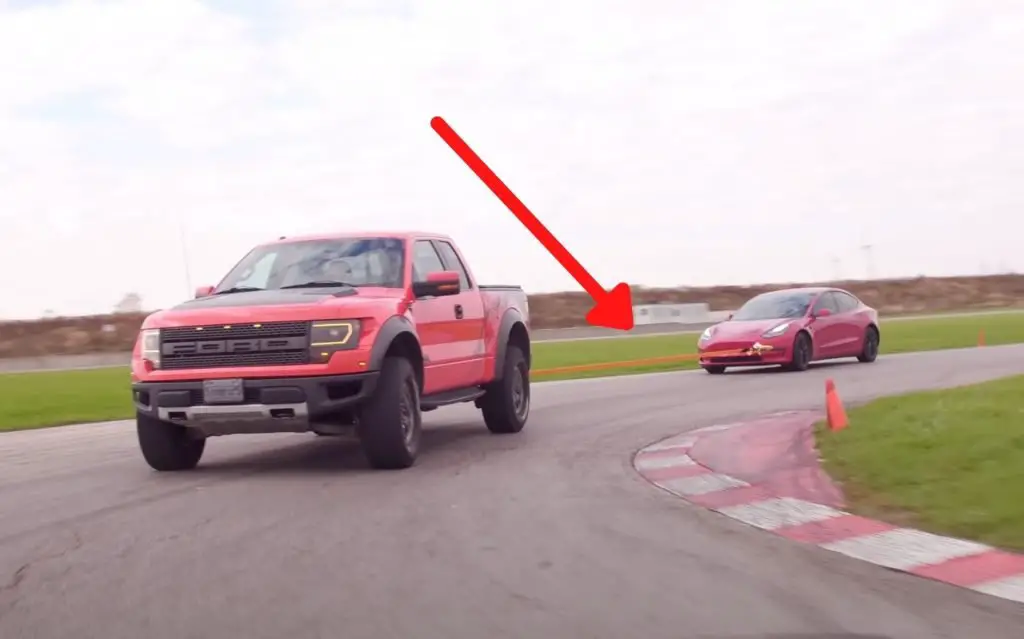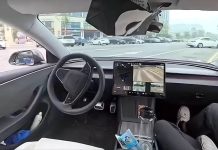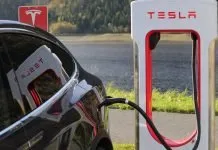Tesla is the pioneer in electric vehicle technology. It was one of the first companies to launch a production electric supercar in the 2000s. Since then it has come a long way. Now it is a multi-billion dollar company. Last year, Elon Musk completed Tesla’s S3XY lineup of vehicles by launching the Model 3.
Batteries provide power to electric vehicles. The car charges when the user connects it to a charging outlet. As the driver drives the car, the battery slowly discharges by feeding current to the motors which turn the wheels of the car. Soon enough, the motors discharge the battery. Then the battery needs to be charged again for further driving.
Motors convert electrical energy to mechanical energy. The function of a generator is the reverse of the motor. The construction of the motor and generator is similar. In the motor, the rotor produces a magnetic field to rotate the stator. A generator shaft spins to induce a current.

An Unconventional Way To Charge A Tesla
Tesla Model 3 has two independent Permanent Magnet Synchronous Reluctance Motors (SRM). These motors also act as generators because the construction of the two machines is the same. Engineers know this and thus, they experimented with a Tesla Model 3.
First Experiment
An F-150 Raptor pickup truck towed a Tesla Model 3 around a closed circuit. During the test, the speed of the F-150 was kept constant at 30 kilometers per hour. The circuit was 1.4 kilometers long.
During 1 lap of the circuit, the Tesla battery was able to charge by 2% that is it went from 62% to 64%. The battery is charged at the rate of 1 Kilowatt per Kilometer. After 1 lap, the driver drove the Tesla around the track.
The speed of the Model 3 was far greater than the speed of the pickup truck behind which the driver towed the Model 3. The driver achieved a high speed of 130 kilometers per hour.
For further calculations, the tester determined the independent efficiencies of the F-150 raptor and Model 3. Efficiencies calculated at 40-100 kilometer per hour speed range were 22 liters per 100 kilometers and 2.2 liters per 100 kilometers respectively.
After the above step was complete, the tester calculated the efficiency of the Ford F-150 Raptor while it was towing the Tesla. It was called the dependent efficiency. For the F-150 Raptor, it was 69 liters per 100 kilometers.
After some calculations, the tester concluded that it would be cleaner for the environment to charge the Tesla by towing it behind a Ford F-150 and then driving the Tesla to the destination than to just drive the Ford pickup truck by itself.
The experimenters calculated the distance traveled by the vehicles on 1 gallon of fuel. Tesla can travel a distance of 108.7 miles, Ford can travel 10.7 miles in 1 gallon. Furthermore, the towed Tesla can travel 18.1 miles in 1 gallon equivalent of fuel. Since Tesla can travel more miles on 1 gallon in both cases, it is better to drive the Tesla Model 3.
The laws of physics DO NOT BREAK in this process. There are many factors responsible for efficiencies such as aerodynamics and weight. Tesla Model 3 is far more aerodynamic than the Ford F-150 Raptor and weighs almost 2000 pounds less than the pick-up truck.
Another Experiment
Some more people did their own experiments on the Tesla Model 3. Their parameters were a little different and seemed more akin to the real world. In the experiment, they completely discharged the Tesla Model 3 in the middle of nowhere. They called their friend who showed up in a Toyota Camry. The Camry pulled the Tesla Model 3 using a strap.
It was difficult for the Camry to pull the Tesla and the engine of the Camry was close to overheating due to the extra weight of the Tesla Model 3. It was a sunny day and the temperature was higher than average. Thus, high temperatures reduced the efficiencies of both vehicles.
Despite high temperatures, Tesla was able to charge and none of the cars broke down. The Toyota Camry towed the Tesla Model 3 for a total of 6.2 miles through a winding road in the hills. During this time, Tesla’s battery accumulated enough charge in its battery to go 40 miles further by itself. That means that for 6.2 miles towed a Tesla can travel 40 miles by itself. Therefore, by pulling a Tesla a driver can gain a range that is almost seven times more than the distance that the car is being pulled.
This technique of charging is very unconventional and also revolutionary. It will change people’s outlook on range anxiety which currently persists in prospective electric vehicle buyers. It is a smart move to keep a cable in one of the trunks of the electric vehicles in case of an emergency. This method is more environmentally friendly than driving an Internal Combustion Engine on its own. The conversion to electric propulsion will speed up once more people know about this charging technique.


















